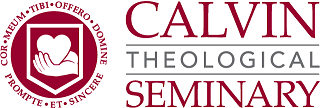Date of Award
4-22-2022
Document Type
Dissertation
Degree Name
Doctor of Philosophy (PhD)
Department
Systematic Theology
First Reader
Carl J. Bosma
Second Reader
Mary L. Vanden Berg
Third Reader
Sujin Pak
Abstract
The case for continuity between the Reformation and Reformed Orthodoxy receives a significant contribution from the examination of select Messianic Psalms in the commentaries of Wolfgang Musculus, William Ames, Johannes Cocceius, and Matthew Henry. This contribution is found through the examination of three lines of thought— exegetical method, Christological development, and the formulation of piety.
The consistent employment of prophecy in order to understand the sensus literalis as the Christological reading of the text seems to indicate continuity. The usage of typology also furthers this argument as these interpreters identified various persons or objects as types of Christ. By using the analogia fidei, they were able to demonstrate the New Testament fulfillment of the prophecies and types that were identified in the Psalms. Finally, the fairly consistent use of patristic sources, Jewish exegesis and commentators in the Reformed tradition serve to crystallize the arguments for continuity in the Reformed tradition.
The Christological themes and doctrines developed from the Psalms further augment the case for continuity. Psalms 8 and 40 tell the story of Christ’s incarnation, through his abasement and sacrificial obedience. Psalm 22 depicts the suffering Son, and the vicarious nature of his suffering. Christ’s resurrection and its fruits are both prophesied in both Psalm 16, along with various doctrinal issues such as the incorruptibility of Christ’s body, his descent into hell, and the success of the gospel. Christ’s ascension and its themes are pictured in Psalm 68. Finally, Psalms 2 and 110 designate the Son seated on the throne of heaven upon his ascension.
The final aspect of continuity can be identified in the consistent move from exegetical method to doctrine and then to piety, thus challenging the assertion that these theologians were concerned only with abstract doctrine and scholastic distinctions. Their methodology served the cause of piety and spirituality. The piety developed from their exegesis is often connected to the Christology of the psalms under examination. These three interconnected areas are consistently identified in the commentarial tradition and significantly contribute to the overall argument for continuity between the Reformation and Reformed Orthodoxy.
Recommended Citation
Kuivenhoven, Maarten, "Songs of the Son: Exegetical Method, Christology, and Piety in Reformation and Post-reformation Interpretations of Select Messianic Psalms" (2022). CTS PhD Doctoral Dissertations. 63.
https://digitalcommons.calvin.edu/cts_dissertations/63
Included in
Biblical Studies Commons, Christianity Commons, Religious Thought, Theology and Philosophy of Religion Commons



